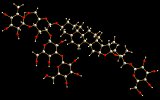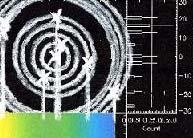
Here’s a news item to make you flush with excitement, or at the very least, make your toes curl. According to a forthcoming report in the ACS journal Environmental Science & Technology, the Swiss are getting in a lather about a new “NoMix” toilet that does what all good chemists have been able to do for generations – separate their solids from their liquids. The new loo is an environmentally improved approach to spending a penny and could substantially reduce pollution problems and conserve water and energy, say the study’s authors.
The NoMix toilet collects urine separately from, ahem, solid matter. Although urine represents only 1% of domestic wastewater, it typically contains 80 percent of the nitrogen and 50% of the phosphorus in sewage.
Judit Lienert and Tove Larsen checked public attitudes toward NoMix toilets in surveys done at a Swiss school and a Swiss research institute. They found high acceptance of the toilet, with large majorities of people expressing favourable attitudes toward the toilet. That was true even though one version of the device requires men to sit to urinate.
The researchers cite the importance of involving users in the introduction of new environmental technology, especially technology that requires the kind of behavioral changes essential with NoMix toilets.
Sit a spell and read the full paper here.




 Also, in partnership, Sciencebase is offering a free trial issue of Photovoltaics International to qualified subscribers – senior engineers and executives working in companies that produce wafers, cells, modules, install utility grade installations or are at current utility grade energy companies working with solar as a power generation source.
Also, in partnership, Sciencebase is offering a free trial issue of Photovoltaics International to qualified subscribers – senior engineers and executives working in companies that produce wafers, cells, modules, install utility grade installations or are at current utility grade energy companies working with solar as a power generation source. After centuries of speculation concerning the existence or otherwise of extraterrestrial intelligence, it has been discovered that a radio signal detected by the Arecibo Observatory in Puerto Rico contains artwork broadcast from deep space.
After centuries of speculation concerning the existence or otherwise of extraterrestrial intelligence, it has been discovered that a radio signal detected by the Arecibo Observatory in Puerto Rico contains artwork broadcast from deep space.